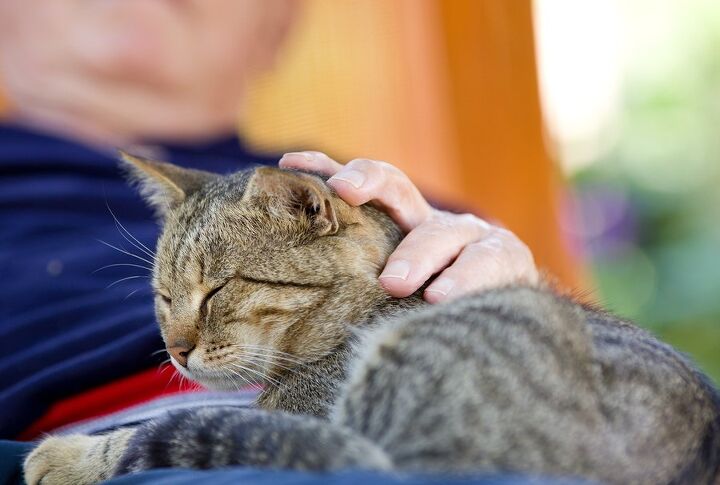Why Do Cats Purr?

Listening to a cat purr can be a soothing experience, but have you ever wondered why do cats purr when you pet them, when they ask for food, or when they’re getting ready to take a nap? Let’s go over the mechanics of purring and find out the reasons behind the adorable rumblings.
First Off, How Do Cats Purr?
Experts have tried for years to figure out exactly how cats produce that precious purring sound, but many now believe that purring actually starts in the cat’s brain.
A repetitive and rhythmic neural oscillator is able to send messages to the cat’s laryngeal muscles. This causes them to twitch at a rate of 25-150 hertz, or vibrations per second. And this results in a sudden separation of your kitty’s vocal cords during exhalation and inhalation, creating the purring sound that every cat owner can’t get enough of.
Related: Why Do Cats Knead?
Contentment…or Pain?
As you probably already guessed, cats purr when they are content and relaxed. But they will also purr when they are feeling threatened, frightened, or nervous, as well as when they are injured. A cat will also purr when in pain or ill, and even when in labor. If you know your kitty really well, you may be able to tell when he is purring as a result of a negative emotion or pain versus pleasure.
A Self-Healing Mechanism
Because a cat’s purr exhibits a frequency of 25 to 150 hertz, which is the same frequency at which bones and muscles are able to grow and repair themselves, some experts speculate that the purring could be a way to self-heal. It may be an evolutionary trait that can be used as a means of survival and that can ensure faster recovery throughout the body.
Like other vocalizations, purring is a form of communication between felines. At a mere few days old, a mother cat will teach her kittens how to purr in order to communicate with each other, find each other, and bond with one another. Once your kitty bonds with you, he’ll use purring to communicate with you as well.
Related: Why Do Cats Like Boxes?
Hunger
You shouldn’t be surprised if your cat purrs when he’s asking for food because it’s actually quite common, and a method that cats cleverly use to get your attention so you’ll fill up their bowl with a delicious meal.
According to this study, cats have learned to use a particular type of purr to solicit attention from their owners in order to get food. This type of purring sounds different from regular purring because it actually incorporates a sort of “cry” that has a frequency similar to a crying human baby. As a result, this purr is really hard to ignore, so cats have learned how to manipulate their human companions to get what they want when they’re hungry.
Try to take note of the type of purring your cat uses when he’s asking for food, as opposed to when he’s snuggling with you. You may notice a difference, especially in how it makes you feel.
A Cat’s Purr is Great for People, Too!
Listening to a cat purr may actually serve to help lower your stress levels and blood pressure. In the same way that cats may use purring as a way to heal themselves, the frequencies produced might also help humans who focus on the purring as well. So whenever you need to feel more peaceful and calm, settle down with your cat and simply listen to him purr as you pet him.
But whether or not your cat’s purr has any healing abilities for you doesn’t really matter, does it? The purr is, after all, one of the many unique, and one of the most beloved, features of felines.

Lisa Selvaggio is a freelance writer and editor, and our resident cats-pert, with certifications in pet nutrition and pet first aid. She enjoys producing content that helps people understand animals better so they can give their pets a safe and happy home.
More by Lisa Selvaggio























